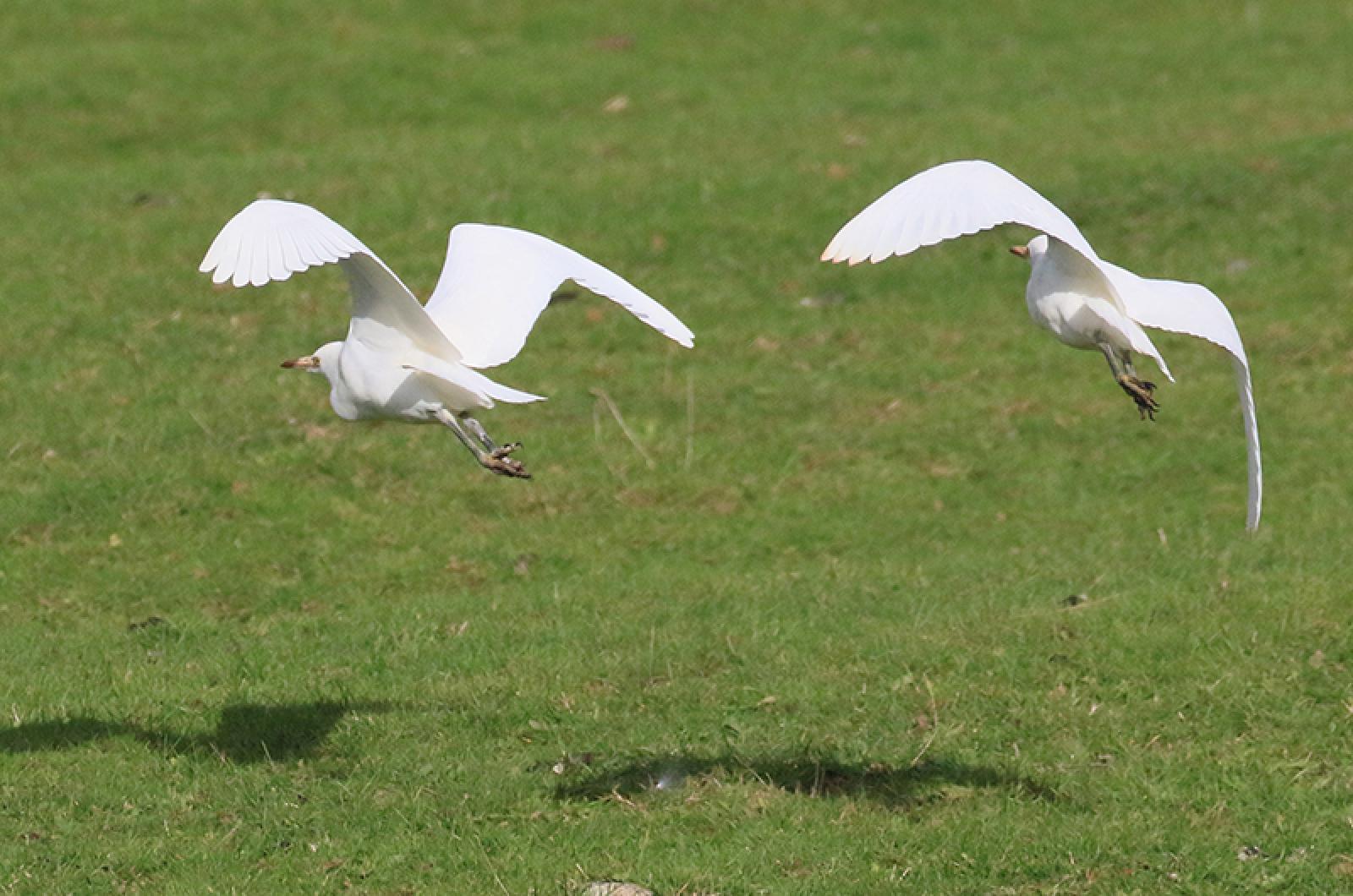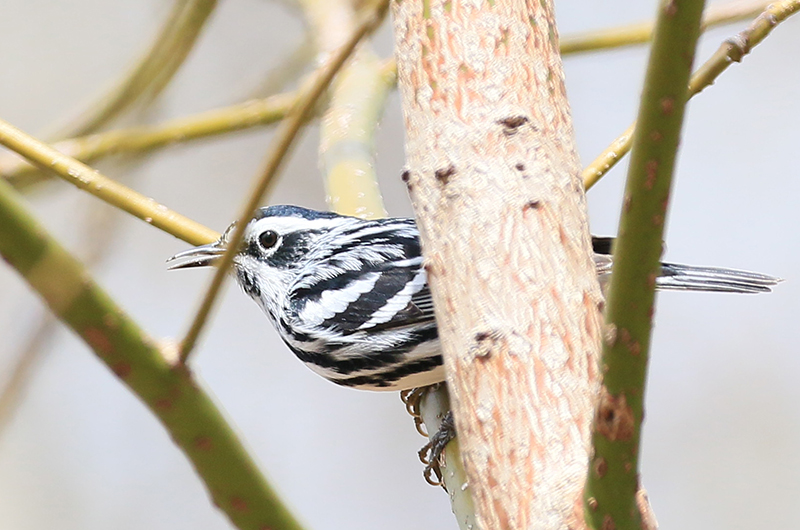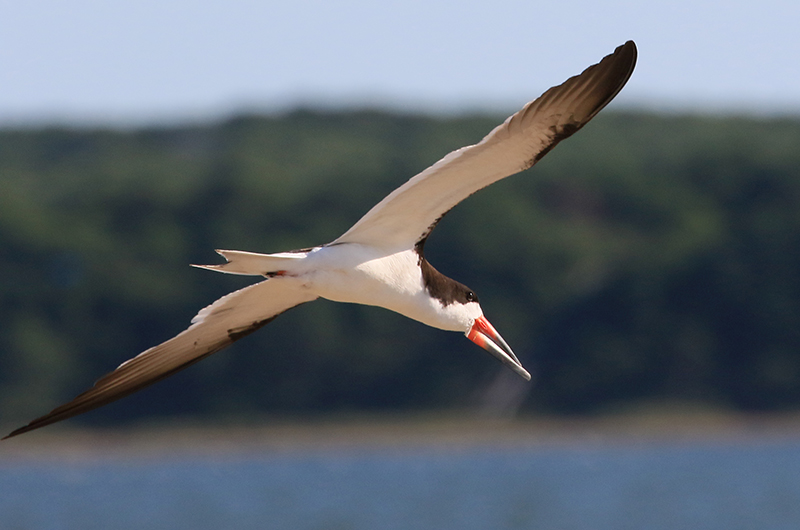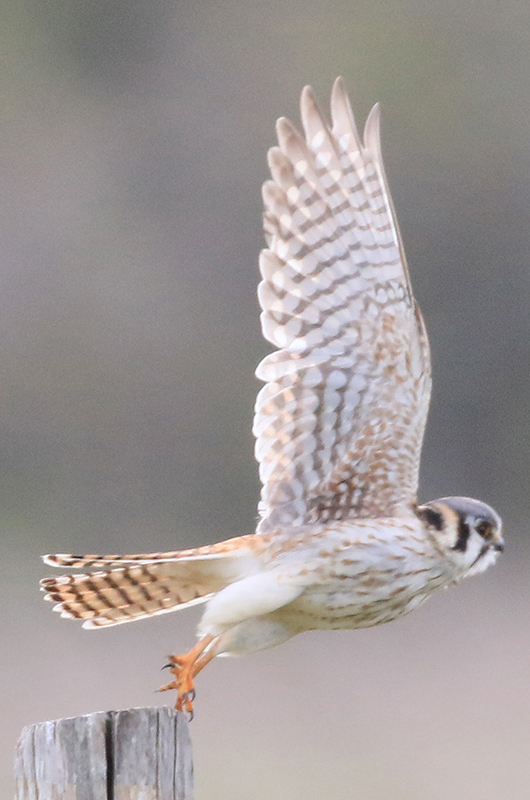Another week another rarity. Last week we reported the black-whiskered vireo; this week’s specialties are shorebirds.
Lanny McDowell was examining his photographs of a flock of dunlin, ruddy turnstone and black-bellied plovers that he took at the Farm Institute on April 23. There were two dowitchers in the photos that looked very different from each other. One was the more common short-billed dowitcher but the other looked a lot like a long-billed dowitcher. They are very similar to each other, especially at this time of the year as they molt into their breeding plumages. Unfortunately, the photos are not conclusive, so most likely they are both short-billed dowitchers.
More photographs of the same flock of shorebirds were taken on April 25, and yet another interesting species was noted. The shape of this bird is unique in that its head looks to be too small for the rest of its body. This is the fifth spring sighting of a buff-breasted sandpiper in New England. The website ebird.com shows three spring sightings: Monomoy National Wildlife Refuge on May 19, 2005, Hartford on April 28, 2011, and Kennebec, Maine on May 22, 2017. Susan Whiting and Barbara Pesch’s Vineyard Birds II reports a sighting on May 31, 1992. Buffies are usually seen in the fall, and a few are found in most years.
I led a bird walk for the Edgartown Public Library on a very windy April 27, and we went to the Farm Institute in search of shorebirds. We found an elusive killdeer near the barn before we saw Lanny McDowell and Allan Keith, who were looking through their scopes at the flock of shorebirds foraging in eight to 10 inch tall grass. The buffie was only visible for quick looks as most of the time it was concealed by the grasses, but we all caught brief glimpses of this unusual bird through a spotting scope. Mr. McDowell also reported that there have been up to three shy female kestrels along the road between the Farm Institute and the Katama Airpark.
Bird Sightings
Yet another unusual sighting was a cattle egret spotted by Michael Whittemore at the Farm Institute on April 22. Diane Keller Nordin photographed two cattle egrets in her backyard on April 24, and Ken Magnuson spotted two of them at the Farm Institute the same day. This species is not seen every year.
Michael Whittemore found two other firsts for the season. He observed a laughing gull on April 25 at Lambert’s Cove Beach, the same day he spotted a green heron along the shores of Stonewall Pond.
Let’s not forget about Little Beach. Kayla Smith found the first black skimmers of the season on April 24. While searching for the skimmers the next day, Jeff Bernier spotted the first willet of the season.
Warren Gossen made a video of a wind-blown snowy egret as it was foraging in a Farm Pond salt marsh on April 28. The poor bird could barely stand up in the strong gusty wind.
Lest we forget, migration also means birds depart for more northern climes. Mary Kuh Ambulos spotted a great blue heron on April 25. Most of them have already left as they are winter residents.
It is songbird migration as well, and there have been a slew of them sighted this week.
On April 19, Andrea Hartman spotted an eastern kingbird as it perched on some fencing on the Chilmark side of Tisbury Great Pond. This is early for this species, and so far it is the only one that has been seen.
Ken Magnuson visited Sheriff’s Meadow Sanctuary on April 28 and spotted a northern parula. Also that day, Lanny McDowell found a black-and-white warbler at Menemsha Hills. On April 24 he spotted a blue-headed vireo at Katama.
A male hooded warbler is Allan Keith’s best sighting of the week. This elusive species was in the thickets near the head of Deep Bottom Cove on April 24. At his house on April 27, Allan Keith saw his first rough-winged swallow of the year. An adult lesser black-backed gull was in the fields near his house the previous day. On April 25 he had a brown thrasher in his yard, and spotted a blue-gray gnatcatcher at Great Rock Bight. On April 24 he found both northern parula and black-and-white warblers at Menemsha Hills, and the previous day he spotted both blue-winged and magnolia warblers near a row of spruce trees in the State Forest.
Migrants that showed up in previous weeks are still showing up across the Island. Indigo buntings have been seen by Sue Shea in Edgartown on April 24, Sarah Carr on April 25 and 26, and Lanny McDowell on April 27. Jeff Bernier found a flock of eight of them at the Farm Institute on April 25, while he spotted a blue grosbeak at Katama on April 28.
Speaking of grosbeaks, more rose-breasted grosbeaks have been seen by Holly Mercier on April 23, Scotty Goldin on April 27 and by Sioux Eagle on April 29. These birds were all seen at their feeders.
Another round of ruby-throated hummingbirds arrived at feeders between April 27 and 29. They have been spotted by Wayne Smith, Phyllis DeBettencourt, Dan Bradley, Sue Shea, Kim Hathaway and Patricia Lawrence. Tom Hodgson reports that his first hummer showed up on April 28, and remarks that they have shown up on the April 27 or 28 every year for the past five years!
Peter Kretschmann reports a very colorful scene on April 29 of a male Baltimore oriole amidst the flowers on his cherry tree that is in full bloom.
I am excited to report that an eastern phoebe finally showed up in my yard on April 29, only a month or so late.
On the breeding birds front, we know that Canada geese nest early. But it still seems to be too early for Warren Gossen’s April 28 report of a family of recently hatched goslings. A nearly four week incubation period means the nest must have been started in the last week of March.
The northward migration of birds is peaking and the torrent of migrants will continue through the month of May! Please report your sightings to birds@mvgazette.com.
Robert Culbert schedules private guided birding tours, and is an ecological consultant with Nature Watch LLC living in Vineyard Haven.







Comments
Comment policy »